When getting your truck ready for towing, it’s essential to know how to properly connect the trailer, load it according to weight distribution guidelines, and adopt specific driving techniques to ensure a safe trip. Since towing can greatly affect a vehicle’s performance and handling, practicing safety precautions and familiarizing yourself with the unique challenges of towing are vital steps to take before heading out on the road.
Key Takeaways
- Know your truck’s towing capacity and specifications to ensure safe and efficient towing
- Properly connect the trailer and maintain correct weight distribution for a smoother driving experience
- Be aware of specific driving techniques and safety precautions while towing a trailer
Assessing Towing Capacity and Tow Vehicle Specifications
Understanding Tow Rating and Towing Capacity
Before preparing my truck for towing, it’s crucial for me to understand my vehicle’s tow rating and towing capacity. These figures ensure that I stay within safe limits while pulling my trailer. Towing capacity is a series of calculations that depend on various factors and are expressed in pounds. It is essential not to exceed the manufacturer’s recommended maximum weight.
To determine my truck’s towing capacity, I need to refer to the gross combined vehicle weight rating (GCVWR) and subtract the weight of my truck, passengers, and cargo. This information can be found in a owner’s manual or through online sources.
Selecting the Right Hitch Class
Once I know my towing capacity, I must choose the right hitch class for my towing setup. Hitch classes are categorized based on their weight capacities, from Class I for lighter loads, to Class V for heavy-duty towing. The class of hitch required is based on the total weight being towed. Here’s a quick overview of common hitch classes:
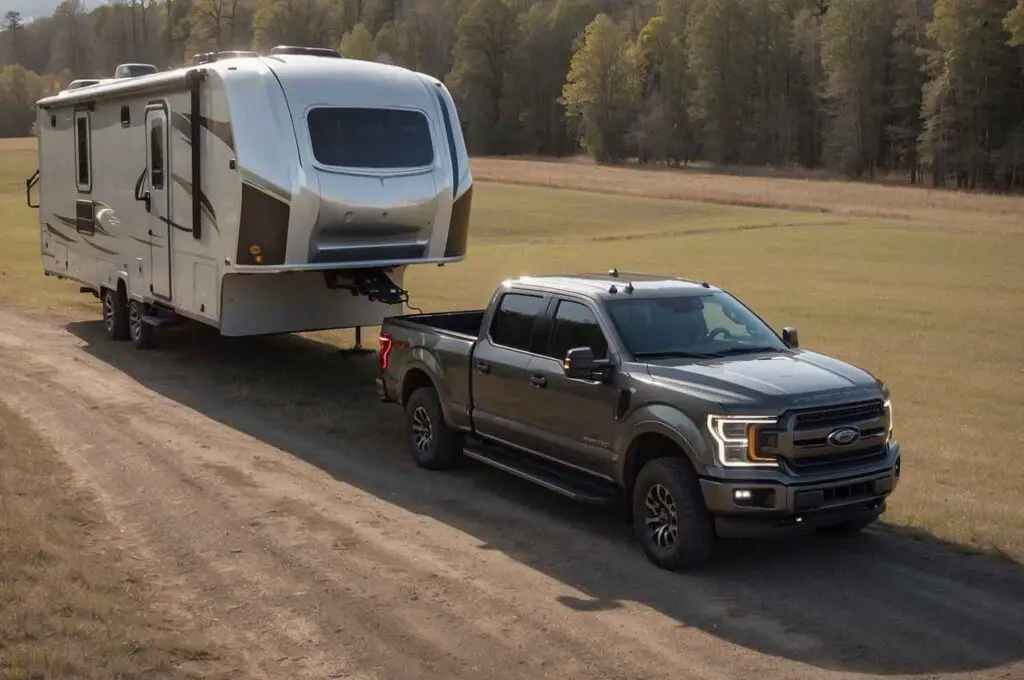
| Hitch Class | Weight Capacity |
|---|---|
| Class I | Up to 2,000 lbs |
| Class II | Up to 3,500 lbs |
| Class III | Up to 8,000 lbs |
| Class IV | Up to 10,000 lbs |
| Class V | 10,000+ lbs |
I must ensure that the hitch class is compatible with both my tow vehicle and trailer to ensure safe towing. My owner’s manual or vehicle manufacturer will provide information about the correct hitch class for my truck.
Preparing the Tow Vehicle
Before you start towing, it’s crucial to prepare your truck properly to ensure a safe and smooth journey. In this section, I will discuss how to prepare the tow vehicle by checking tires and tire pressure, and inspecting suspension and brakes.
Checking Tires and Tire Pressure
First and foremost, I recommend inspecting the tires on both your truck and the trailer. Make sure there are no visible signs of wear or damage, such as cracks, bulges, or uneven tread wear. Don’t forget to check the trailer’s spare tire as well.
Next, I advise checking and adjusting the tire pressure for both the truck and trailer according to the manufacturer’s recommendations. Proper tire pressure is essential for safe towing and handling. Keep in mind that tire pressure can change with temperature fluctuations, so it’s a good idea to check it regularly throughout your trip.
Here’s a simple list to help you remember the tire-related tasks:
- Check tire condition for visible damage.
- Verify trailer and truck tire pressure.
- Adjust tire pressure according to manufacturer guidelines.
- Remember to check the spare tire.
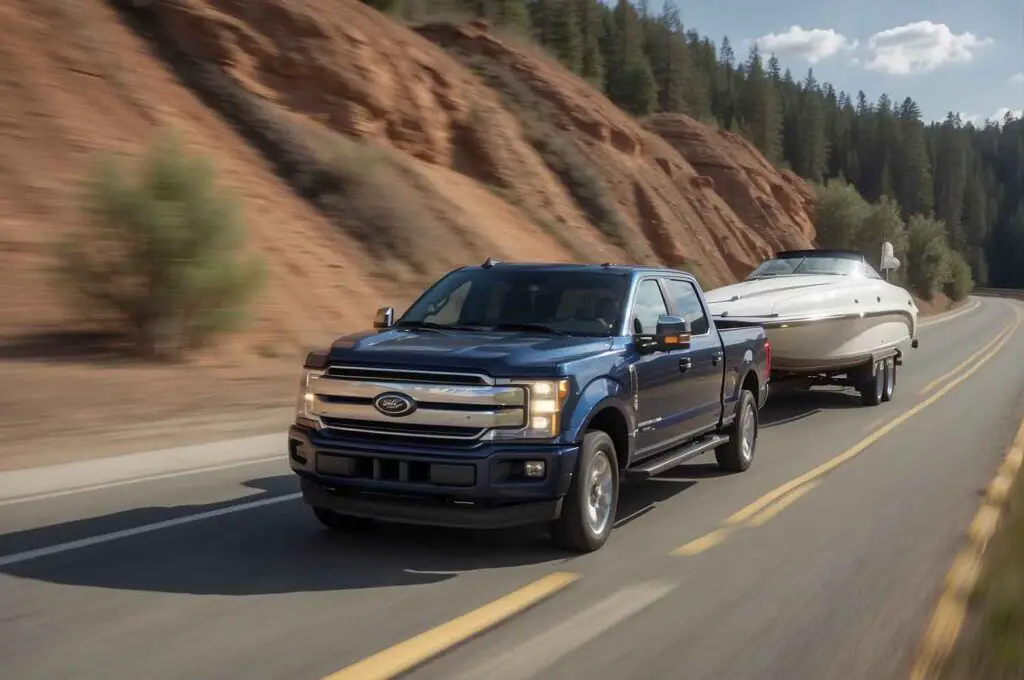
Inspecting Suspension and Brakes
Another essential aspect of preparing your truck for towing is inspecting the suspension and brakes. I suggest starting with the truck’s suspension system. Make sure the truck’s load is evenly distributed, as this will help prevent issues with handling, steering, and braking. If your truck has a rear axle, verify that it’s in good condition and not overloaded.
Moving on to brakes, it’s vital to ensure both the truck and trailer brakes are working correctly. I recommend checking the brake pads on your truck to confirm they have adequate thickness. Inspecting the trailer’s brakes is just as important – they should be well-maintained and in proper working order. If your trailer is equipped with an electronic brake controller, make sure it is correctly connected and adjusted.
To summarize, here’s what you need to inspect in the suspension and brakes:
- Distribute load evenly on the truck.
- Inspect the rear axle (if applicable) for overloading.
- Check the thickness of your truck’s brake pads.
- Verify the trailer brakes are well-maintained and working correctly.
- Confirm the electronic brake controller is connected and adjusted, if applicable.
By diligently preparing the tow vehicle, I ensure my truck is ready for towing, reducing the risk of issues and making my journey safer and more enjoyable.
Connecting the Trailer
Attaching the Hitch and Safety Chains
First, I need to ensure that I have a proper hitch and tow ball size to fit the needs of the trailer I tow. The trailer should have markings to indicate the necessary sizes, and you need to ensure that the connected trailer runs parallel to the ground. If a tow vehicle sits too high, I should use an adjustable hitch or drop hitch to achieve the desired height ([source]).
Once the hitch is attached, it’s essential to connect the safety chains. There are two crucial steps in connecting safety chains:
- Crossover method: Hook the left trailer safety chain to the right side of my vehicle’s hitch, and hook the right safety chain to the left side of the hitch. This helps to keep the trailer steady and provide extra support in case of an emergency.
- Proper slack: Ensure that there is enough slack to make turns without the chains pulling tight but not too much that they drag on the ground.
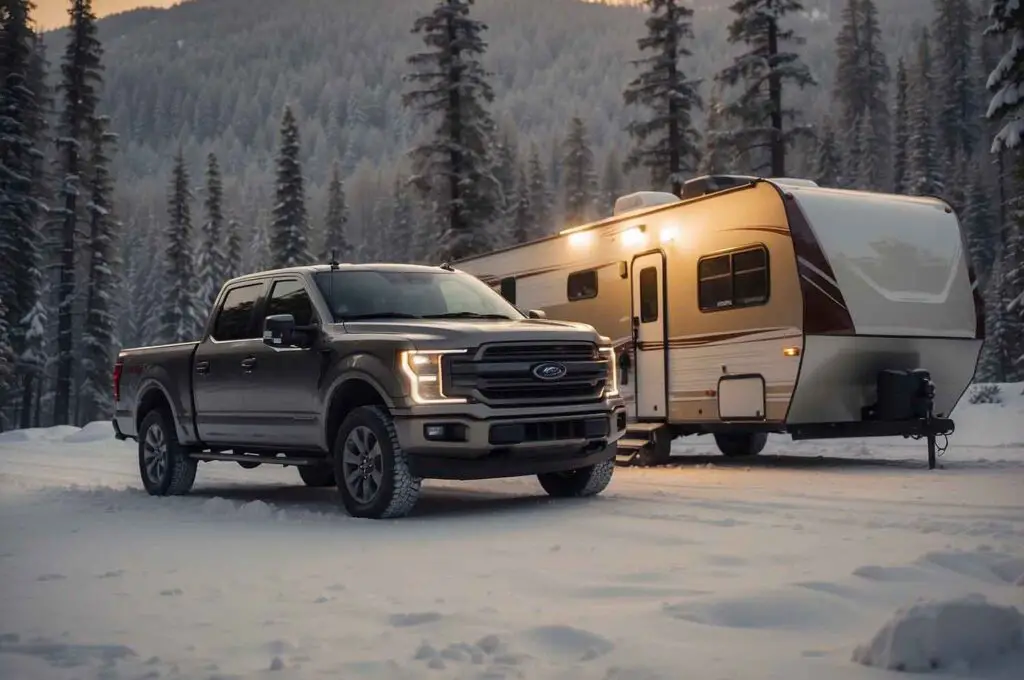
Securing the Trailer Coupler and Wiring Harness
After attaching the hitch and safety chains, it’s time to secure the trailer coupler. I must raise the trailer coupling by winding the handle on the jockey wheel in a clockwise direction, allowing the tow ball to pass under the ball cup [source]. Then, reverse my vehicle to position the tow ball under the cup. If the trailer is light and empty, I may be able to position the coupling over the ball by moving the trailer.
Next, I need to connect the wiring harness, which ensures that my taillights, brake lights, and turn signals on the trailer are functioning correctly. This is crucial for safe and legal towing. To do this, I need to follow these four steps:
- Inspect the wiring harness: Make sure that the harness is not frayed or damaged, and that the connectors are clean.
- Match the connectors: Ensure that the trailer wiring connector and the vehicle connector have the same number of pins and that their functions match, such as left turn/brake, right turn/brake, tail/marker, and ground.
- Plug in the connectors: Firmly plug the connectors together, ensuring they’re secure and locked in place.
- Test the signals: Activate the brake lights, turn signals, and taillights on my vehicle to ensure everything is working correctly on the trailer [source].
By meticulously following these steps in connecting my trailer, I can confidently tow while maintaining the highest level of safety and compliance.
Loading and Weight Distribution
Balancing the Load
When preparing my truck for towing, I always make sure to balance the load in the trailer. Ensuring that the weight is evenly distributed on both sides of the trailer and across the axles helps to eliminate the likelihood of trailer sway. To balance the load, I follow these steps:
- Place heavy items low: I make sure to position heavy items near the floor and over the axles to maintain a low center of gravity.
- Distribute weight evenly: I distribute the weight of the items across the trailer’s left and right sides, aiming for a 50/50 distribution.
- Secure all items: Once everything is placed, I double-check that all items are secure and won’t shift during transit.
Adjusting Weight Distribution
After loading my trailer, I use a weight distribution hitch to help distribute the excess tongue weight between my truck and the trailer. This ensures that my truck’s front axle regains some of the weight it had lost, restoring driving control and safety. To adjust the weight distribution, I follow these guidelines:
- Choose the right weight distribution hitch: I select a hitch with a rating that matches or exceeds the weight of my load and the tongue weight of my trailer.
- Set the hitch height: I set the hitch height so that the trailer and my truck are both level when connected.
- Adjust spring bars and tension: I adjust the spring bars and tension in the weight distribution hitch to distribute the load evenly and provide a smooth and stable ride.
By following these steps, I ensure that my truck and trailer are properly balanced and that the weight distribution is adjusted correctly, making for a safer and more enjoyable towing experience.
Driving Techniques and Considerations
When towing a trailer with my truck, it’s essential to be aware of some specific driving techniques and considerations. These factors ensure that I safely transport the load and avoid accidents or damage. In this section, we will discuss navigating turns and corners, and understanding stopping distances and speed.
Navigating Turns and Corners
Taking turns and corners while towing a trailer requires extra care and attention. I often need to take wider turns to accommodate the trailer’s extra length. This can be achieved by:
- Swinging out the truck a little before making the turn.
- Keeping an eye on my side mirrors to monitor the trailer’s position.
- Slowing down and signaling early before attempting a turn.
Another critical aspect of turning is proper weight distribution, which helps to minimize trailer sway and prevent the truck from fishtailing. To achieve this, I make sure to load the cargo properly and ensure the truck and trailer are well-balanced.
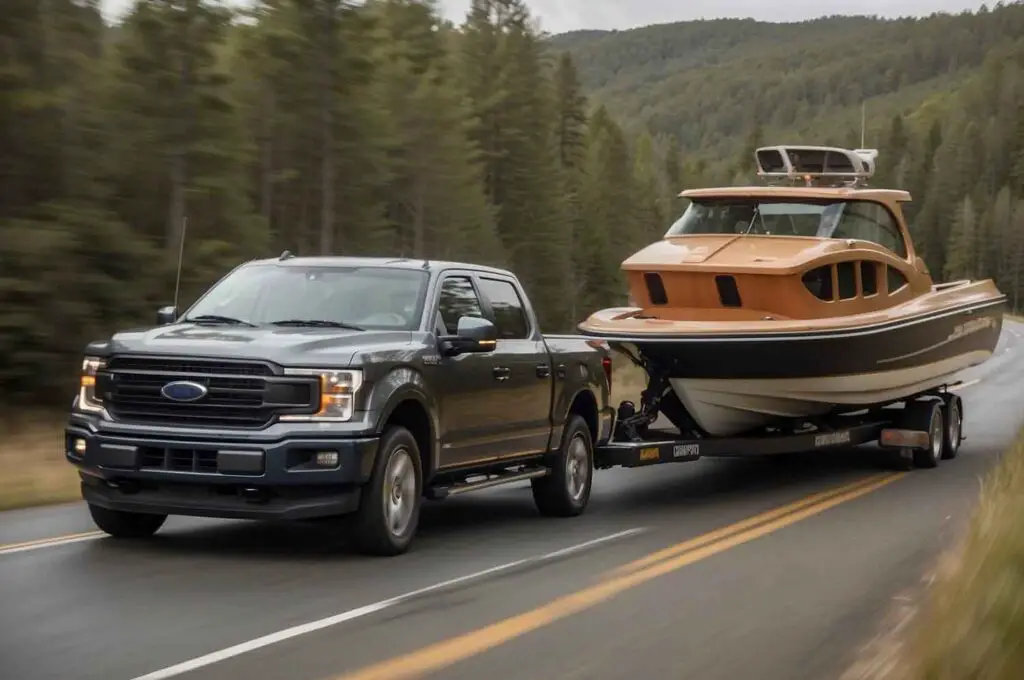
Understanding Stopping Distances and Speed
When towing a trailer, I need to be more mindful of my speed and stopping distances. The added weight and length of the trailer affect breaking time and distance, so it’s crucial to:
- Maintain a safe distance from the vehicle in front of me.
- Slow down well in advance, especially when approaching intersections, traffic lights, or stop signs.
- Be extra cautious in wet or slippery road conditions, as stopping distances can significantly increase.
It’s essential for me to continuously monitor my speed while towing to prevent possible accidents or loss of control. Observing posted speed limits for trucks and trailers is always a good practice, especially in areas with strict regulations.
By being extra vigilant while towing and practicing safe driving techniques, I can ensure that both my truck and trailer arrive at their destination without any issues. Remember to always pay attention to the road, use your mirrors effectively, and make adjustments accordingly.
Practice and Safety Precautions
As someone who’s planning on towing, it’s important to ensure that both you and your truck are well-prepared for the task. By following proper practice and safety precautions, you’ll be able to tow with confidence and reduce the chances of any mishaps occurring.
Conducting a Pre-Trip Inspection
Before hitting the road, I always conduct a pre-trip inspection. This involves checking the various components of my towing setup to confirm they’re in good working order. Here’s what I typically look for:
- Mirrors and signals: I make sure that my mirrors are properly adjusted, allowing me to clearly see the trailer and its surroundings. I also verify that all signals and lights are functioning correctly on both my truck and the trailer.
- Safety chains: Ensuring that the safety chains are correctly connected and secure is crucial, as they serve as a backup in case the primary hitch fails.
- Weight distribution: I check the weight distribution of the load I’m towing, making sure that it’s properly balanced to avoid any sway or instability while driving.
- Braking system: I confirm that my truck and trailer’s braking system is functioning properly by conducting a test stop.
- Transmission and engine: Lastly, I inspect my truck’s engine and transmission, making certain that they’re in good shape to handle the additional load.
Practicing with a Spotter and Backing Up
Practicing with a spotter is a vital part of preparing for towing. With their assistance, I can effectively improve my skills in maneuvering the trailer, especially during tricky situations such as backing up. Here’s some advice on how to practice with a spotter:
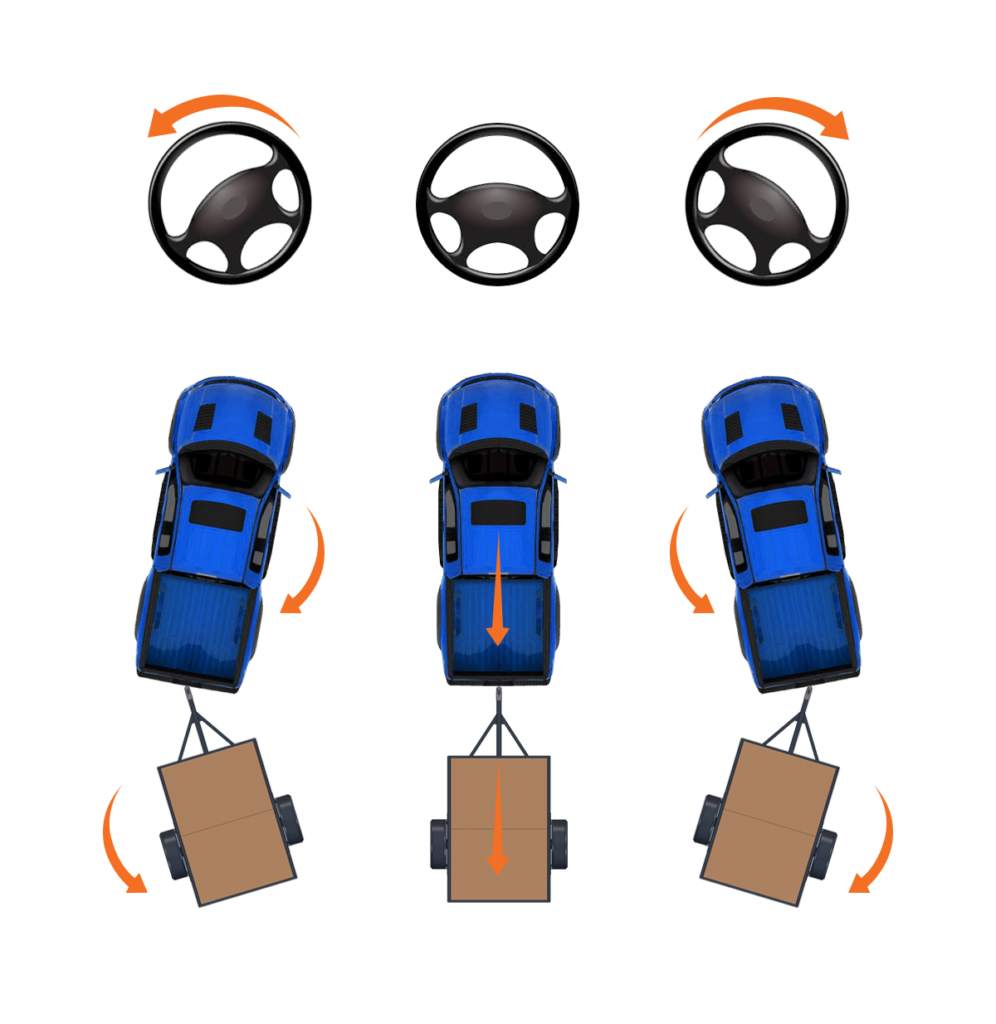
- Communication: Establishing clear communication with your spotter is essential. Agree on hand signals or use walkie-talkies to convey instructions.
- Wide turns: Be aware that towing requires making wider turns compared to driving your truck alone. Your spotter can help guide you to avoid clipping curbs or other obstacles.
- Reversing: When backing up, I always remember that the trailer moves in the opposite direction of my truck’s steering. My spotter stands in a position where they can see both the trailer and my truck, and they guide me accordingly.
By adhering to these practices and safety precautions, I ensure that both my truck and I are prepared for a successful towing experience. Regular practice and thorough inspections are vital in minimizing risks and keeping the towing process as smooth and safe as possible.


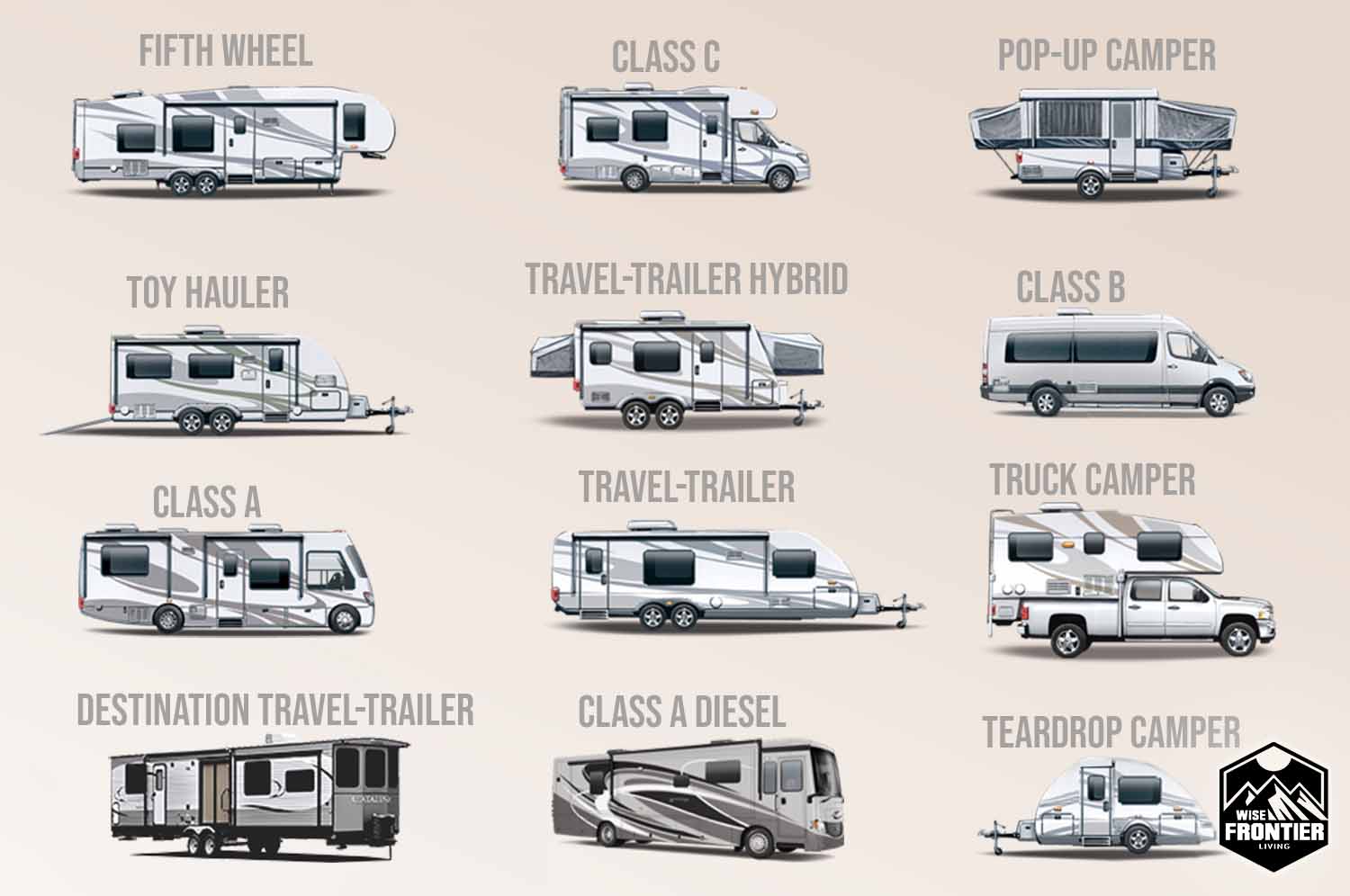
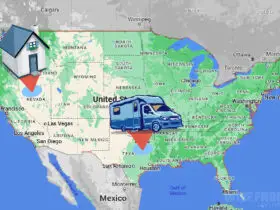
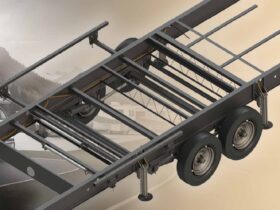

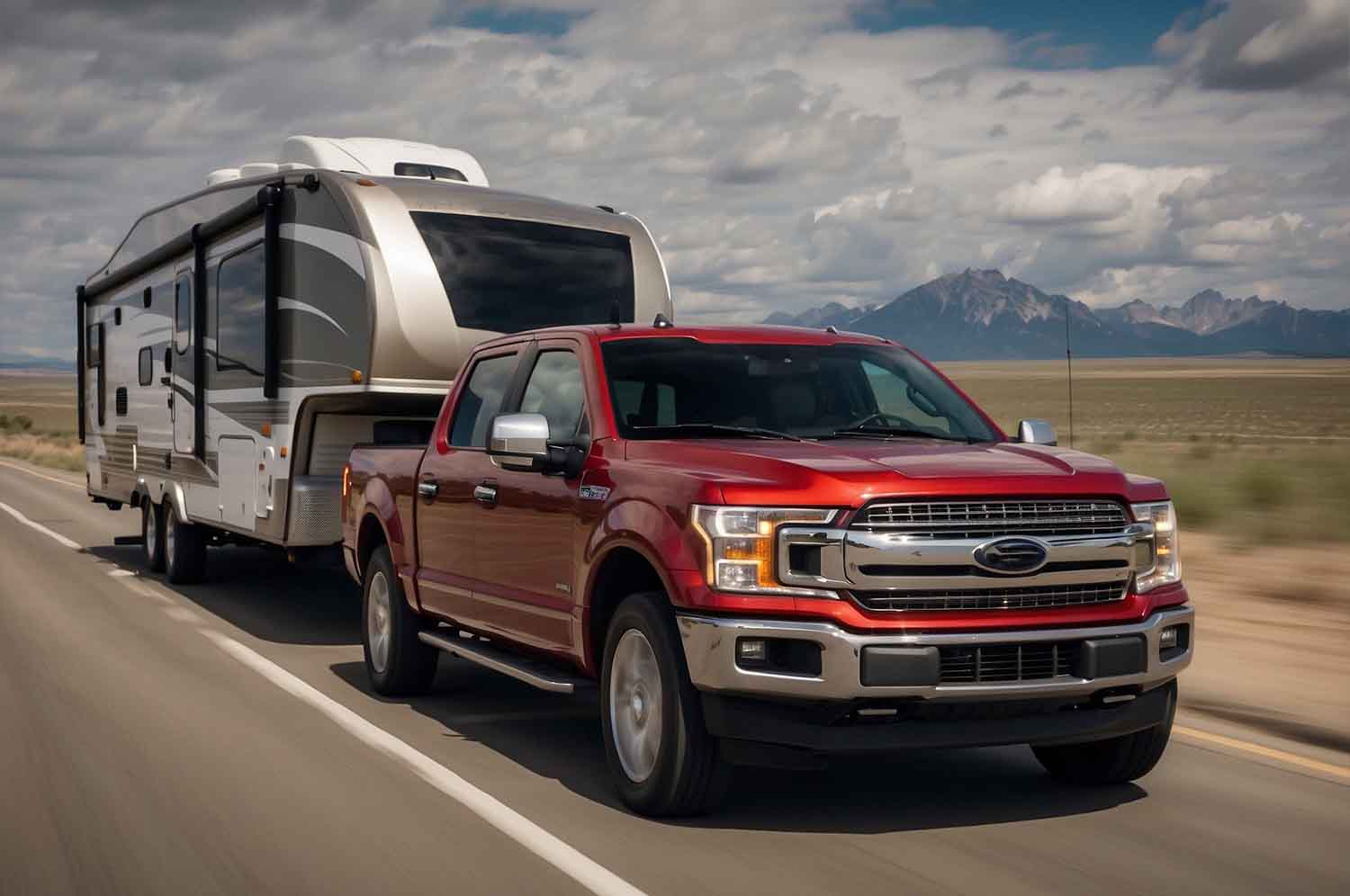
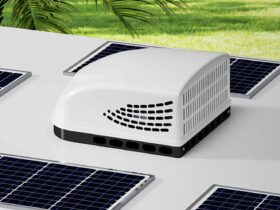
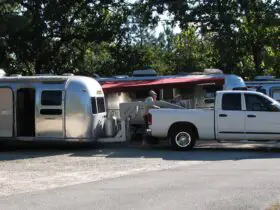
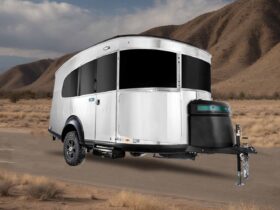
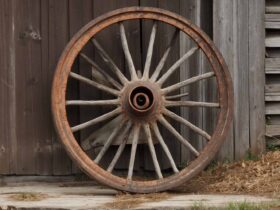


Leave a Reply